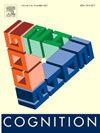颜色分布学习如何影响目标导向的视觉运动行为?
IF 2.8
1区 心理学
Q1 PSYCHOLOGY, EXPERIMENTAL
引用次数: 0
摘要
视觉世界丰富而复杂,但重要的是,它包含许多统计规律。例如,环境特征分布在不同时刻往往保持相对稳定。最近的研究结果表明,观察者可以学习到环境颜色分布的惊人细节,即使这些颜色属于视觉搜索中被主动忽略的刺激物(如干扰物)。我们的目的是确定这种学习是否会影响视觉环境中的定向,并用眼球移动来测量。在两个视觉搜索实验中,观察者必须找到一个奇异的目标。首先,我们测试了观察者通过固定目标来选择目标的情况。其次,我们测量了观察者对目标做出判断并手动做出反应时的眼球回旋运动。试验以块为单位,其中包含学习试验,在学习试验中,干扰物来自相同的颜色分布(均匀分布或高斯分布),而在随后的测试试验中,目标物与学习干扰物分布的平均值距离不同。在徒手和囊回测量中,整个学习试验过程中的成绩都有所提高,而当干扰物的颜色来自高斯分布时,成绩会更好。此外,测试试验中的囊回延迟取决于当前目标颜色与学习试验中的干扰物颜色之间的距离,这与手动反应的结果相同。当目标颜色在学习干扰物颜色分布范围内时,延迟会减慢,这也表明观察者学会了均匀分布和高斯分布之间的区别。我们使用随机森林研究了几个变量在预测飞蚊症和手动反应时间中的重要性,结果显示两种模式的排名相似,但先前的分心颜色对自由眼球运动的影响更大。总之,我们的研究结果表明,对环境颜色分布详细特征的学习会影响早期的注意选择,而不是后期的决策过程。本文章由计算机程序翻译,如有差异,请以英文原文为准。
How does color distribution learning affect goal-directed visuomotor behavior?
While the visual world is rich and complex, importantly, it nevertheless contains many statistical regularities. For example, environmental feature distributions tend to remain relatively stable from one moment to the next. Recent findings have shown how observers can learn surprising details of environmental color distributions, even when the colors belong to actively ignored stimuli such as distractors in visual search. Our aim was to determine whether such learning influences orienting in the visual environment, measured with saccadic eye movements. In two visual search experiments, observers had to find an odd-one-out target. Firstly, we tested cases where observers selected targets by fixating them. Secondly, we measured saccadic eye movements when observers made judgments on the target and responded manually. Trials were structured in blocks, containing learning trials where distractors came from the same color distribution (uniform or Gaussian) while on subsequent test trials, the target was at different distances from the mean of the learning distractor distribution. For both manual and saccadic measures, performance improved throughout the learning trials and was better when the distractor colors came from a Gaussian distribution. Moreover, saccade latencies during test trials depended on the distance between the color of the current target and the distractors on learning trials, replicating results obtained with manual responses. Latencies were slowed when the target color was within the learning distractor color distribution and also revealed that observers learned the difference between uniform and Gaussian distributions. The importance of several variables in predicting saccadic and manual reaction times was studied using random forests, revealing similar rankings for both modalities, although previous distractor color had a higher impact on free eye movements. Overall, our results demonstrate learning of detailed characteristics of environmental color distributions that affects early attentional selection rather than later decisional processes.
求助全文
通过发布文献求助,成功后即可免费获取论文全文。
去求助
来源期刊

Cognition
PSYCHOLOGY, EXPERIMENTAL-
CiteScore
6.40
自引率
5.90%
发文量
283
期刊介绍:
Cognition is an international journal that publishes theoretical and experimental papers on the study of the mind. It covers a wide variety of subjects concerning all the different aspects of cognition, ranging from biological and experimental studies to formal analysis. Contributions from the fields of psychology, neuroscience, linguistics, computer science, mathematics, ethology and philosophy are welcome in this journal provided that they have some bearing on the functioning of the mind. In addition, the journal serves as a forum for discussion of social and political aspects of cognitive science.
 求助内容:
求助内容: 应助结果提醒方式:
应助结果提醒方式:


